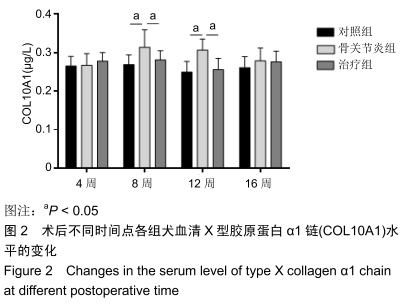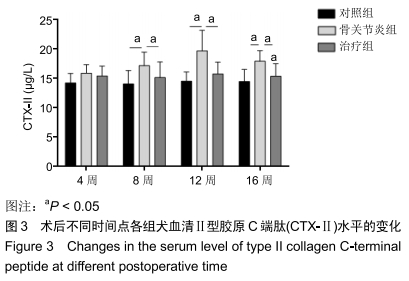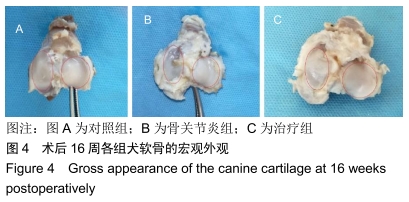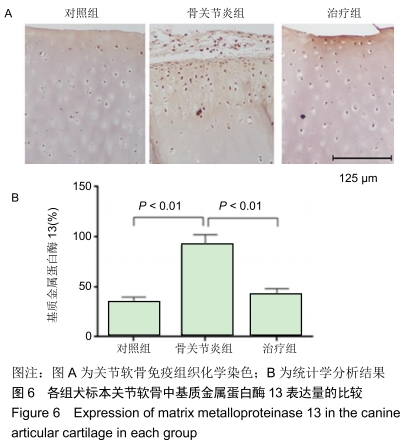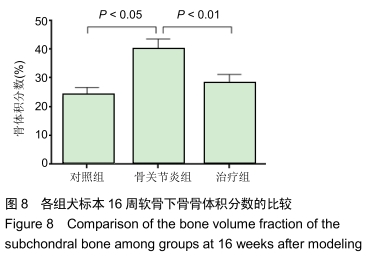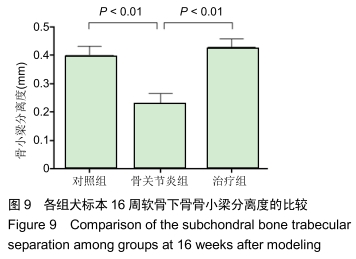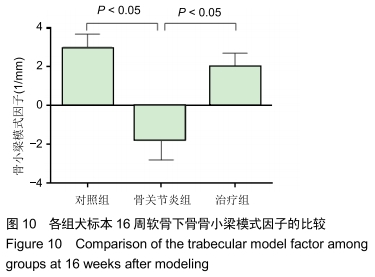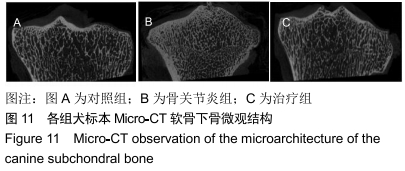[1] MCALINDON TE, BANNURU RR, SULLIVAN MC,et al. OARSI guidelines for the non-surgical management of knee osteoarthritis. Osteoarthr Cartil.2014;22:363-388.
[2] TANG X, WANG S, ZHAN S,et al. The prevalence of symptomatic knee osteoarthritis in China: Results from China Health and Retirement Longitudinal Study.Arthritis Rheumatol. 2016;68(3): 648-653.
[3] LEE S, KIM SJ.Prevalence of knee osteoarthritis, risk factors, and quality of life: The Fifth Korean National Health And Nutrition Examination Survey.Int J Rheum Dis. 2017;20(7):809-817.
[4] ELKIN M, ARIEL I, MIAO HQ, et al.Inhibition of bladder carcinoma angiogenesis, stromal support, and tumor growth by halofuginone. Cancer Res.1999;59(16): 4111-4118.
[5] YEE KO, CONNOLLY CM, PINES M, et al,Halofuginone inhibitstumor growth in the polyoma middle T antigen mouse via athrombospondin-1 independent mechanism.Cancer Biol Ther.2006;5(2):218-224.
[6] GNAINSKY Y, KUSHNIRSKY Z, BILU G, et al. Gene expression during chemically induced liver fibrosis: effect of halofuginone on TGF-βsignaling.Cell Tissue Res.2007;328(1):153-166.
[7] TURGEMAN T, HAGAI Y, HUEBNER K, et al.Prevention of muscle fibrosis and improvement in muscle performance in the mdx mouse by halofuginone.Neuromuscul Disord.2008;18(11): 857-868.
[8] JI B, ZHANG Z, GUO W, et al. Isoliquiritigenin blunts osteoarthritis by inhibition of bone resorption and angiogenesis in subchondral bone. Scientific Reports.2018;8(1):1721.
[9] CUI Z, CRANE J, XIE H, et al. Halofuginone attenuates osteoarthritis by inhibition of TGF- activity and H-type vessel formation in subchondral bone. Ann Rheum Dis. 2016;75(9):1714-1721.
[10] TANG Y, WU X, LEI W, et al. TGF-β1–induced migration of bone mesenchymal stem cells couples bone resorption with formation.Nat Med.2009;15(7):757-765.
[11] WENBO M, BOYONG X, HAIRONG M, et al.Halofuginone Attenuates Osteoarthritis by Rescuing Bone Remodeling in Subchondral Bone Through Oral Gavage.Front Pharmacol. 2018;9:269.
[12] LOESER RF, GOLDRING SR, SCANZELLO CR, et al.Osteoarthritis: a disease of the joint as an organ. Arthritis Rheum.2012; 64:1697-1707.
[13] LOESER RF, COLLINS JA, DIEKMAN BO.Ageing and the pathogenesis of osteoarthritis.Nat Rev Rheumatol.2016;12(7):412-420.
[14] EDITH C, BISERKA R, DEROYER CÉLINE, et al.Insights on Molecular Mechanisms of Chondrocytes Death in Osteoarthritis.Int J Mol Sci. 2016;17(12). pii: E2146.
[15] CHEN D, SHEN J, ZHAO W, et al. Osteoarthritis: toward a comprehensive understanding of pathological mechanism.Bone Res. 2017;5:16044.
[16] LOESER RF. Aging and osteoarthritis: the role of chondrocyte senescence and aging changes in the cartilage matrix.Osteoarthritis Cartilage. 2009;17(8):971-979.
[17] FANG J, XU L, LI Y, et al. Roles of TGF-beta 1 signaling in the development of osteoarthritis.Histol Histopathol. 2016;31(11): 1161-1167.
[18] ZHU M, TANG D, WU Q, et al.Activation of β-catenin signaling in articular chondrocytes leads to osteoarthritis-like phenotype in adult β-catenin conditional activation mice. Bone Miner Res.2009; 24(1): 12-21.
[19] LIN AC, SEETO BL, BARTOSZKO JM, et al.Modulating hedgehog signaling can attenuate the severity of osteoarthritis.Nat Med. 2009; 15:1421-1425.
[20] SAITO T, FUKAI A, MABUCHI A, et al.Transcriptional regulation of endochondral ossification by HIF-2α during skeletal growth and osteoarthritis development.Nat Med.2010;16(6):678-686.
[21] YANG S, KIM J, RYU JH, et al.Hypoxia-inducible factor-2alpha is a catabolic regulator of osteoarthritic cartilage destruction.Nat Med. 2011;16(6):687.
[22] GOLDRING SR, GOLDRING MB.Changes in the osteochondral unit during osteoarthritis: structure, function and cartilage-bone crosstalk. Nat Rev Rheumatol. 2016;12(11):632-644.
[23] ROBINSON WH, LEPUS CM, WANG Q, et al. Low-grade inflammation as a key mediator of the pathogenesis of osteoarthritis.Nat Rev Rheumatol. 2016;12(10):580-592.
[24] BURR DB, GALLANT MA. Bone remodelling in osteoarthritis.Nat Rev Rheumatol. 2012;8(11):665-673.
[25] Cao X.Targeting osteoclast-osteoblast communication.Nat Med.2011; 17(11):1344-1346.
[26] BURR DB, RADIN EL.Microfractures and microcracks in subchondral bone: are they relevant to osteoarthrosis?.Rheum Dis Clin North Am . 2003;29(4):675-685.
[27] SNIEKERS YH, INTEMA F, LAFEBER FP, et al. A role for subchondral bone changes in the process of osteoarthritis; a micro-CT study of two canine models.BMC Musculoskelet Disord. 2008;9:20.
[28] XIE L, TINTANI F, WANG X, et al. Systemic neutralization of TGF-β attenuates osteoarthritis. Ann N Y Acad Sci. 2016;1376(1):53-64.
[29] CASTAÑEDA S, ROMAN-BLAS JA, LARGO R,et al. Subchondral bone as a key target for osteoarthritis treatment.Biochem Pharmacol. 2012;83(3):315-323.
[30] SURI S, DAVID A. Walsh. Osteochondral alterations in osteoarthritis. Bone.2012;51(2):204-211.
[31] CHRISTGAU S, GARNERO P, FLEDELIUS C, et al. Collagen type IIC-telopeptide fragments as an index of cartilage degradation. Bone. 2001;29(3):209-215.
[32] LUYTEN FP, LORIES RJU, VERSCHUEREN P, et al. Contemporary concepts of inflammation, damage and repair in rheumatic diseases.Best Pract Res Clin Rheumatol. 2006;20(5):829-848.
[33] GOLDRING MB, GOLDRING SR.Articular cartilage and subchondral bone in the pathogenesis of osteoarthritis.Ann N Y Acad Sci. 2010; 1192:230-237.
[34] VON D MK, KIRSCH T, NERLICH A, et al.Type X collagen synthesis in human osteoarthritic cartilage. Indication of chondrocyte hypertrophy. Arthritis Rheum.2010;35(7):806-811.
|

